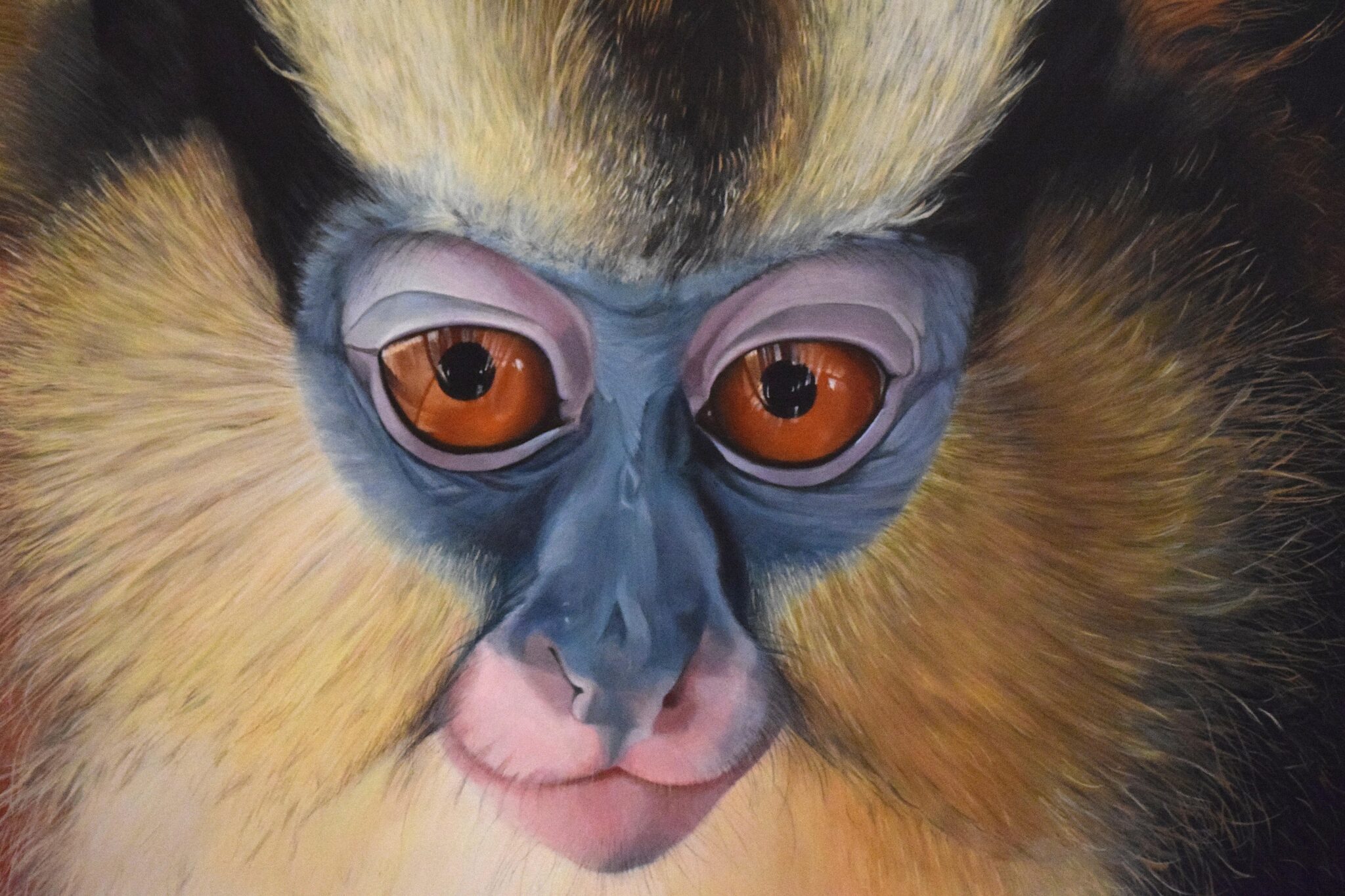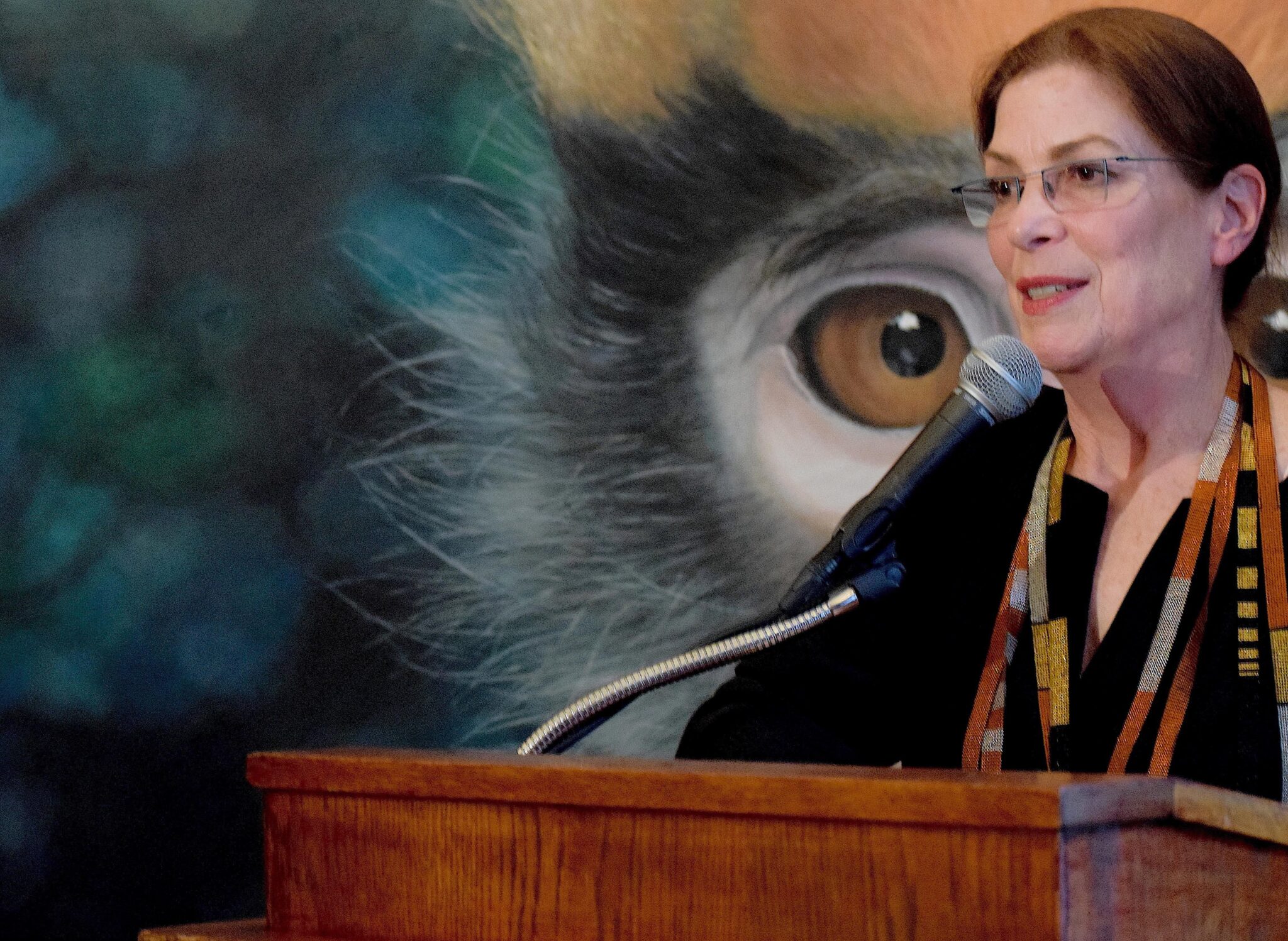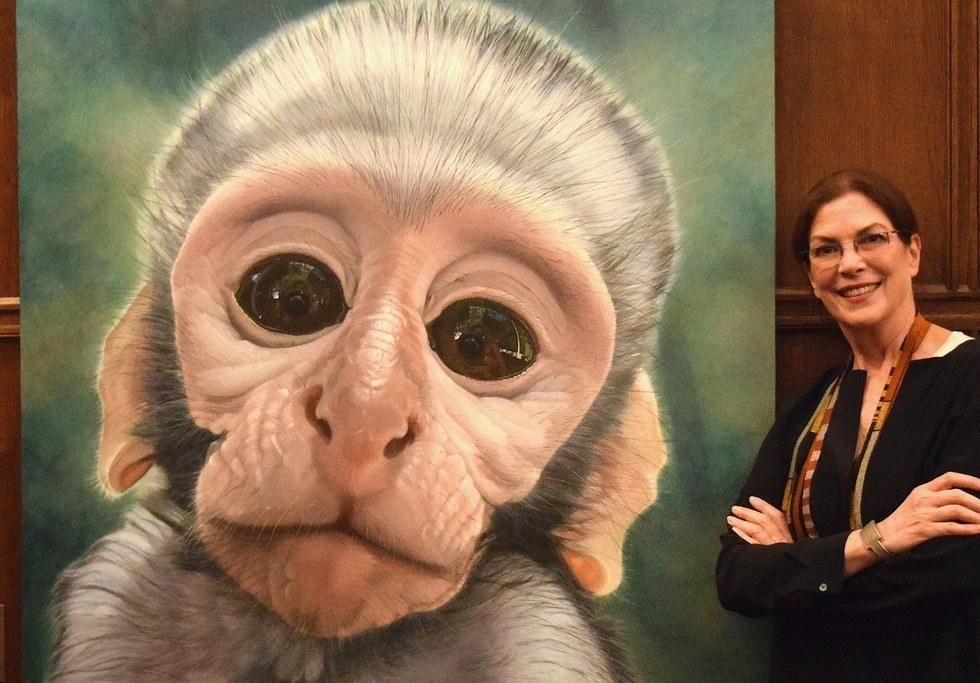

The Explorers Club in New York City was covered with portraits of primates on May 10, in the first art exhibit the club has ever hosted in its 113 years. The show featured artist Robin Huffman who was honored Wednesday evening for her work in environmental conservation.
The exhibit, Witness, displayed the many monkeys and apes that Huffman has cared for during her time at animal sanctuaries around the world. Huffman told EcoWatch that these animals deserve to live freely just like we do and to make that happen, we must be their voice.

“This is the first gallery we’ve ever done and we’ve done it in part because her work is downsizing a global issue,” said Will Roseman, executive director of The Explorers Club. “Witness is the perfect name for it because it’s forcing us to witness what we’ve done to these beautiful creatures.”
Huffman has not always been a painter, in fact, she used to be an interior designer in New York where she lived a lavish life of cocktail parties and schmoozing with corporate executives. But, about 10 years ago, Huffman found her true purpose, which she said was to help primates.
“I went to look at gorillas on a volunteer vacation. I was studying them, and then I fell in love with them,” she said. “Suddenly my career of thirty years, with a great income and a condo, just didn’t matter.”
Huffman ditched her high-rise apartment overlooking the city and headed for Cameroon, where she worked at a sanctuary for several months. “Now, I refer to my life as BP and AP, before primates and after,” she explained.
She began collecting the monkey’s stories, photographing them and later painting them.
This is Zero Zero, a mustached guenon, who arrived at the sanctuary after being orphaned, sick and injured. After four days of care and attention—he loved mangos and leaves—Zero Zero fell ill and died.

“I was still grieving five years later, thinking about the brief life of that innocent animal,” she said. “Then, somebody said ‘you should paint his picture, tell his story,’ and I did it as a way to get over the sadness and pay tribute.”
Since beginning to paint, Huffman has created dozens of portraits. She often works out of friends’ homes or anywhere she is welcome.
“I’ve even painted in the corridor of the storage facility where I hold my work,” she said. “I sold my home to be able to budget and afford going to Cameroon and pay to volunteer at the sanctuaries. My ideas of what is important changed a lot. Things that were unimportant felt like unwanted weight.”

Huffman said her life has a calling now. She wants to educate others about the exotic pet trade, horrendous conditions for animals in captivity, poaching and overall conservation efforts that can give these animals their habitat back.
For example, this is Rocky, she was put on display as a spectacle for 10 years with a chain around her neck, which was attached to a metal cart. She now has poor vision from the harsh sun and is very small for a full grown female chimp due to malnutrition.

“It’s about animal welfare, but also about conservation and preserving a species,” she said. “It’s about respecting the individual and realizing they have as much of a right to live as we do.”

“It’d be a better world if there didn’t have to be sanctuaries, but for now they do have to exist,” she concluded.

 233k
233k  41k
41k  Subscribe
Subscribe 